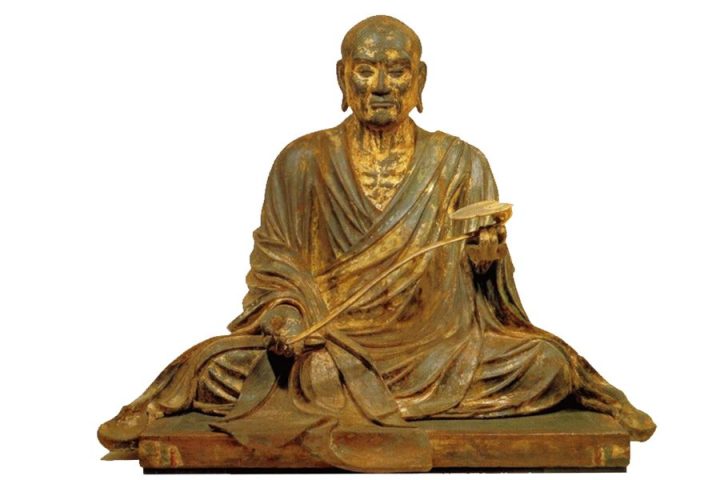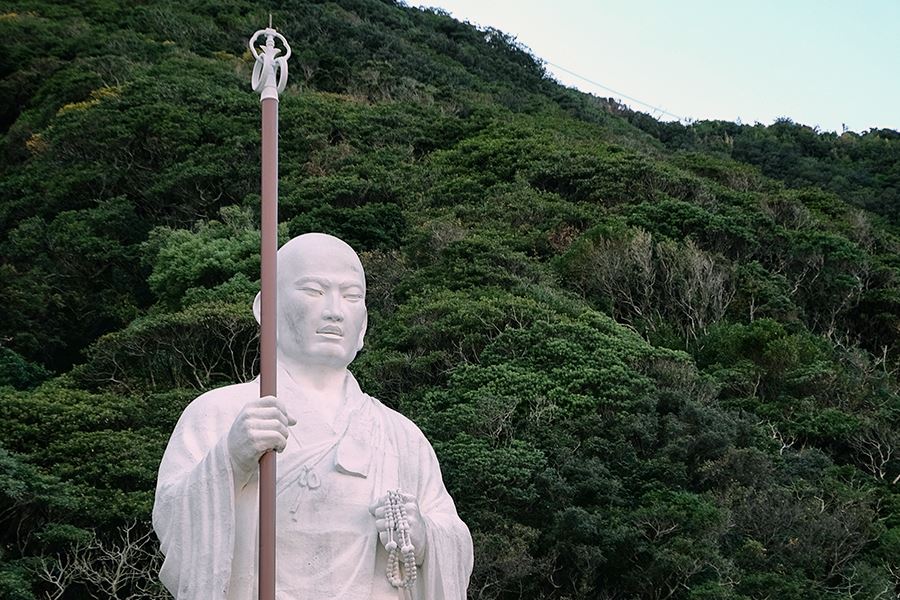Gyōki
Home » Gyōki
Gyōki
Name In Japanese : 行基
Pronunciation : gyōki
Period : 668 to 749
Although Kūkai is widely thought of as the originator of the Shikoku Pilgrimage, the monk Gyōki Bosatsu has a stronger claim. Of the 88 temples, Gyōki is said to have established 37, while Kūkai may have founded two or three. Gyōki, who lived until 749, 25 years before Kūkai was born in 774, was in fact the subject of the myths and legends later attributed to Kūkai. Gyōki is often enshrined with Kūkai in the Daishido, the temple building dedicated to the temple’s founder.
Gyōki, also known as Gyōgi, (668–749) was a Buddhist priest of the Nara period, born in Kawachi Province (now Sakai, Ōsaka). He may have been of Korean descent.
At the age of 15, Gyōki became a monk and studied at Asuka-dera in Nara, returning to Kawachi in 704 and making his home into a temple. Then in defiance of the regulations that strictly prohibited activities by priests outside their monastic compounds, he began a peripatetic practice, traveling around the country preaching Buddhism to commoners and helping the poor.
In addition to setting up monasteries and nunneries that functioned as hospitals for the poor, he built temples and carried out public works such as digging springs and irrigation. Much of this work was carried out in Shikoku.
Because his activities weren’t licensed by the Office of Priestly Affairs, Gyōki and his followers were persecuted by the government. However, thanks to his popularity and his engineering and map-making abilities, he received a pardon. After returning to the capital in Nara, Emperor Shōmu made Gyōki overseer of the construction of Tōdai-ji temple, which is still the largest wooden building in the world. Gyōki raised funds and popular support for the project, while his monks under his supervision served as his deputies. In 745, he was given the title of Great Priest, the first person to receive the honour. In this way, Gyōki rose to the very pinnacle of the Japanese Buddhist establishment. Tōdai-ji was completed in 749, the year of Gyōki’s death at the age of 80.

After his death, Gyōki began to be revered as a Buddhist saint or bodhisattva, and the Imperial Court in Kyōto granted him the title of Bōsatsu in 751. Popular legends of his works and miracles abound.
The career of Gyōki Bosatsu has many similarities with that of Kūkai, who followed in Gyōki’s footsteps half a century later.
Related Tours

Experience the most beautiful and interesting temples of the Shikoku Pilgrimage in seven days.

A tour for families or friends, staying in the most characterful kominka and ryokan of Shikoku.

Visit the most beautiful and interesting temples of the Shikoku Pilgrimage and walk the toughest trails.

